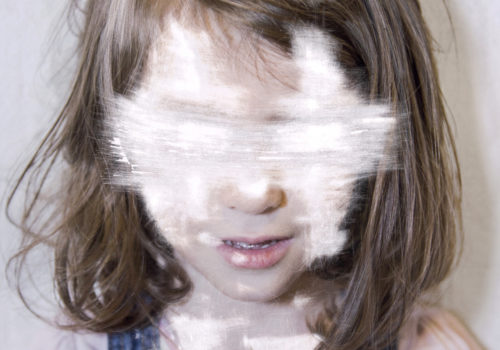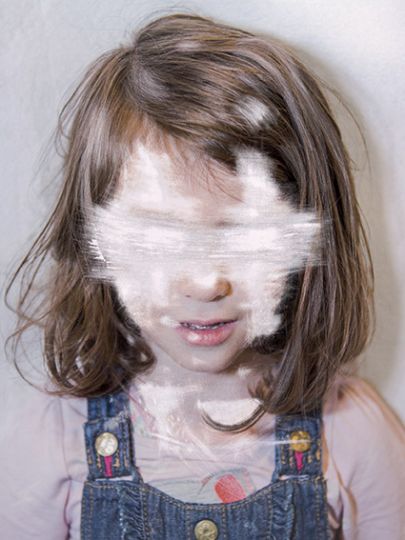A graduate of the University of Wales in documentary photography, Sam Ivin was born in 1992 in London. His Lingering Ghosts series deals with the notion of identity loss of migrants who transit through immigration centers in England before obtaining papers to work and travel.
Why did you become a photographer?
I remember taking pictures as a child and enjoying it, when I was given a camera for my 16th birthday I started to take a serious interest in photography. I have always been someone interested in pictures so it happened quite organically.
I did a yearlong art foundation course before University to confirm photography was what I wanted to pursue. From there I went on to study Documentary Photography at the University of South Wales, Newport until 2014. That’s where I began to find a way of working that suited me.
How did you find Circulation(s) ? Why did you choose to be candidate?
They found me! I got an email asking if I would be happy to put the Lingering Ghosts work forward for selection for the festivals jury. I had never heard of the festival before but I liked the premise of the festival, so I went for it.
What do you expect of this festival?
The Cent Quatre building is a great space and there’s a lot of exciting photography being shown. I’m looking forward to meeting other photographers and discovering some new pictures.
Do you do photography for a living? Can you live of your photography (what kind of photography? Is it enough? Is it easy?
Good question, really important one too. With my own documentary work I’ve made a small amount off the Lingering Ghosts book sales but nothing close to being able to live off it. To earn a living over the last year I’ve photographed events, such as the Segway experience days to keep me going. I also do photography workshops on the side too. It’s not easy but it is possible.
Could you say a few word about the series you’ll present à Circulation(s): What is it about ? Why did you decide to do it? Can you describe how you study or prepare the subject before shooting?
Since graduating I have published the Lingering Ghosts photobook with Italian communication research centre Fabrica, which explores how asylum seekers are affected by long periods of waiting for refugee status in the UK. The large, physically scratched portraits aim to question how our migration system treats those seeking safety, whilst highlighting the frustration and confusion that months, even years of waiting can have on individuals.
The initial reason for exploring the project was to find out who these “asylum seekers” were. As the UK Border Agency was being abolished in 2013 there were a lot of news headlines on the topic. I wanted to know who these people were and why they were in Britain.
I did some initial research, visited a migration detention centre near Heathrow airport, London and found a couple of refugee drop . I visited the centres regularly, particularly the Trinity Centre in Cardiff. Drop-ins are regular meet ups where asylum seekers and refugees go to socialise, learn new skills, and seek advice.
I spent a couple of months at the centre meeting people and doing some volunteering. The more people I met, the more I realised how many asylum seekers are affected by long waiting periods when applying for refugee status. When applying for refugee status asylum seekers have no permission to work or travel leaving them with nothing to do and no idea what their future will hold. Not only months, but sometimes years on end in limbo with no purpose or way of contributing to society. It’s an extremely frustrating and depressing situation to be in.
The situation these people were in and how unnecessarily bureaucratic the whole scenario is made me angry. I wanted to explore the topic and highlight the situation, those were my main motivations.
I’ve found it’s good to do a substantial amount of research online before, although there’s no substitute for meeting people involved with your work face to face. Whilst it’s important to research before hand I try to be open minded so I can reflect on what I find, instead of figures and articles I’ve read.
Who are your masters (photographers, artists…) and why?
I think every documentary photographer has been inspired or at least influenced by Don McCullin, he was the first photographer along with James Natchway that I was really struck by.
Another photographer that made a big impact on me was Tim Hetherington and his photobook Infidel. The project is about a platoon of American soldiers in Afghanistan who are based in the Korengal valley, one of the most dangerous in Afghanistan. He makes the soldiers relatable and humanises them in a way that helps you understand their perspective on war. By combining photographs of them sleeping, their social life and in action, you get a tangible sense of what it feels like to be in their situation.
Recently though I’ve been drawn more to painting and illustration. Probably partly because I’m in the middle of reading, A History of Pictures, by David Hockney and Martin Gayford. Really fascinating book on how images evolve and influence artists.
Does photography change the way you see the world?
I think the pervasive nature of photography in social media & advertising affects the way everyone views the world. With my own photography, I’m not sure it changes the way I see the world but it helps me focus my train of thought, it forces me to consider what my priorities are and what’s important.
Interview by Sophie Bernard
Festival Circulation(s) – Jeune Photographie Européenne
January 21 to March 5, 2017
CENTQUATRE
5 rue Curial
75019 Paris
France
Catalogue
Editions 2017, 22 euros
Book
Sam Ivin, Lingering Ghosts
Asylum seekers in the UK
Published par Fabrica, 19,5 £
http://www.fabrica.it
www.galerie-circulations.com

















